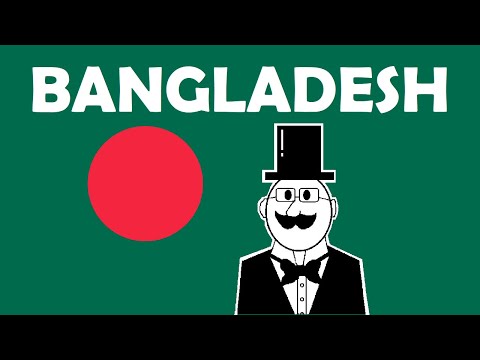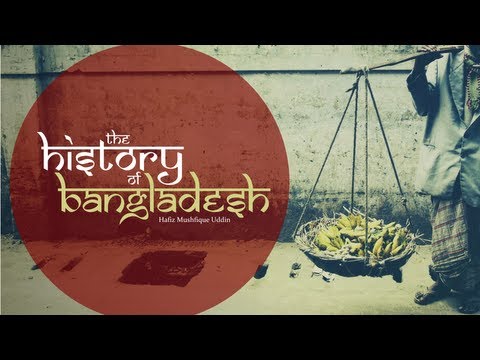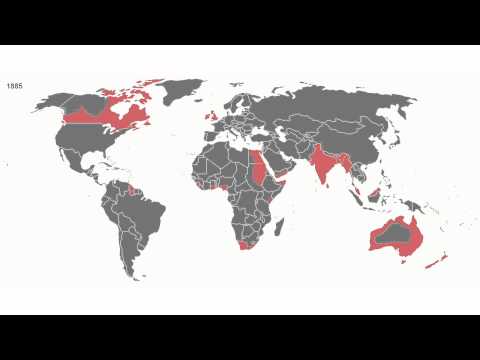The Evolution Of The Former Name Of Bangladesh: A Brief History And Timeline
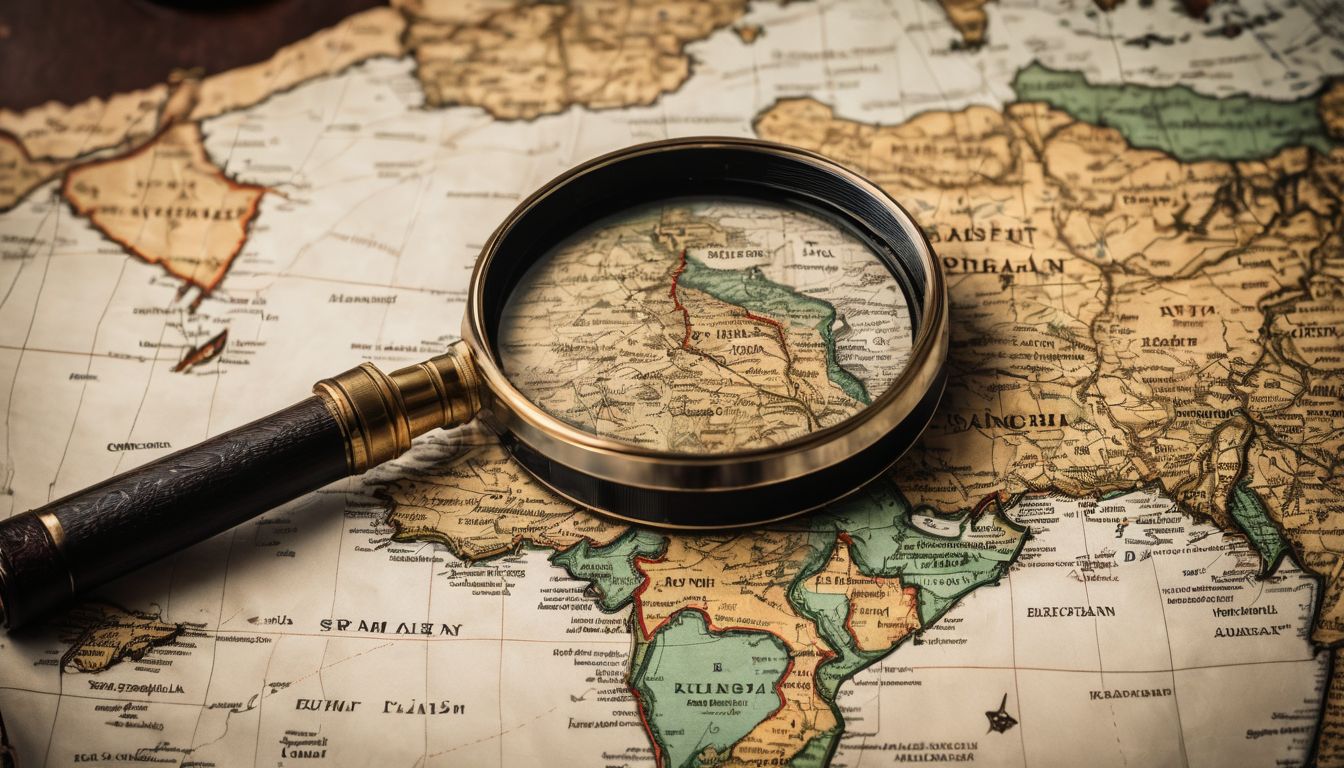
Are you curious about the historical transformation of Bangladesh’s name over the centuries? What if I told you that before its current identity, Bangladesh was once known as ‘East Pakistan‘? This comprehensive article will guide you through a captivating timeline of how this vibrant nation has evolved and emerged with its present-day name.
Dive into this journey to better understand Bangladesh’s rich history and cultural legacy.
Key Takeaways
- Before its current name, Bangladesh was known as East Pakistan from 1947 to 1971.
- Bangladesh has a rich history dating back to ancient Bengali kingdoms like the Gangaridai Empire and Gauda Kingdom.
- Islamic Bengal saw the rule of various dynasties, including the Turko – Afghan rule, Sonargaon Sultanate, and Bengal Sultanate.
- The British colonial period brought European influence to Bengal and led to significant changes in economy, society, and culture.
- The Partition of Bengal in 1905 had far-reaching consequences and played a role in shaping India’s political landscape.
- Union with Pakistan in 1947 eventually led to the War of Independence in 1971 when Bangladesh declared independence from Pakistan.
Early Bengali Kingdoms
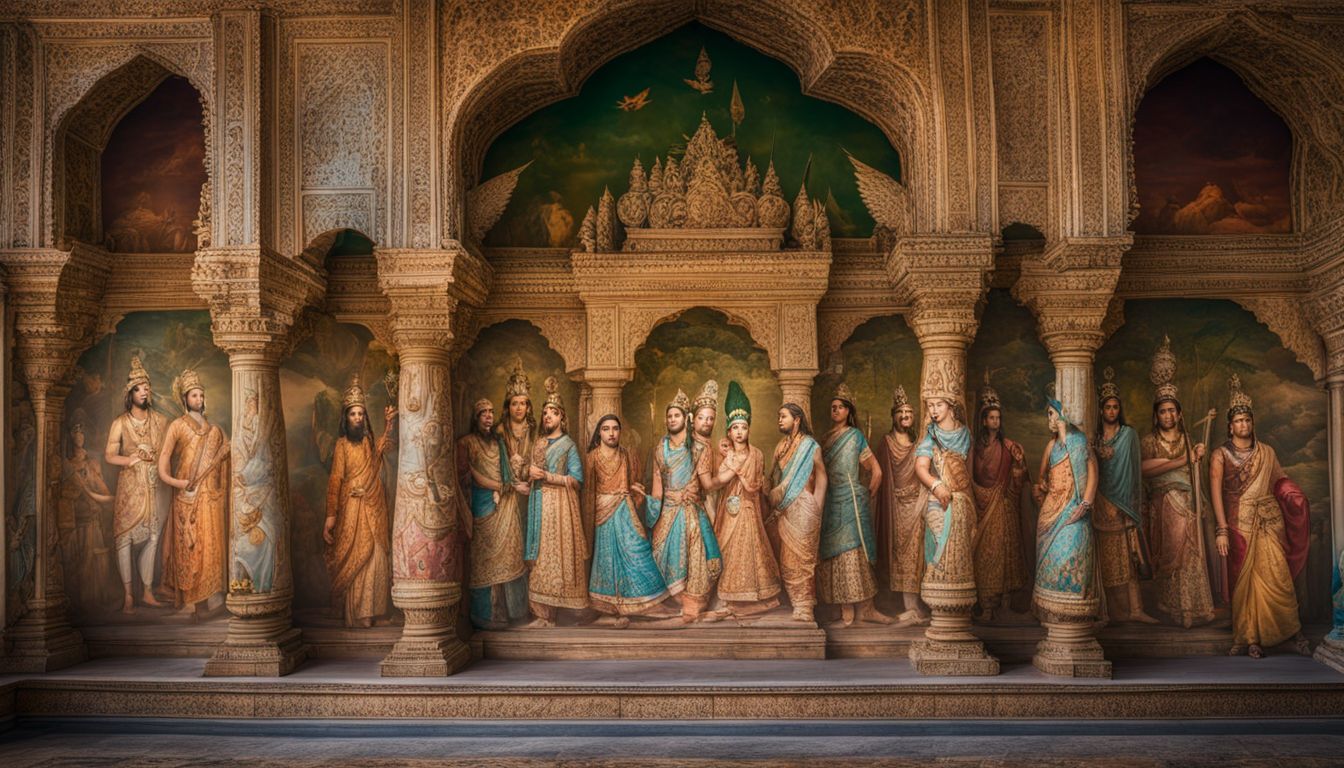
The Early Bengali Kingdoms played a significant role in shaping the history of Bangladesh.
Gangaridai Empire
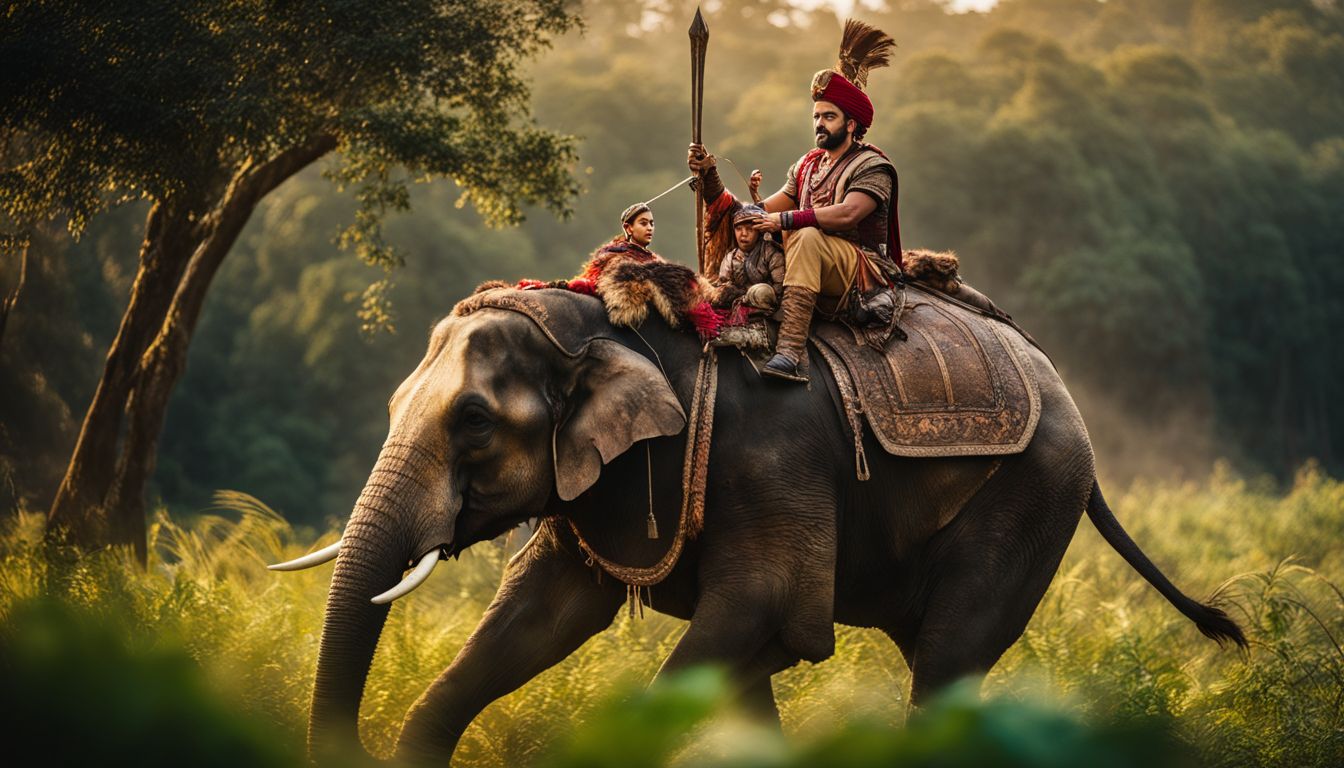
The Gangaridai Empire sat where we now find Bengal. It started around 300 BCE and had its main city in Gange. Some people think Gange was at Chandraketugarh or Wari. This empire was strong with war elephants that made Alexander the Great turn back.
The old Greeks and Romans knew this area as Bengal, too. A man called Megasthenes wrote about it in his book “Indica” near 300 BC. He also named this place Gangaridai.
Gauda Kingdom
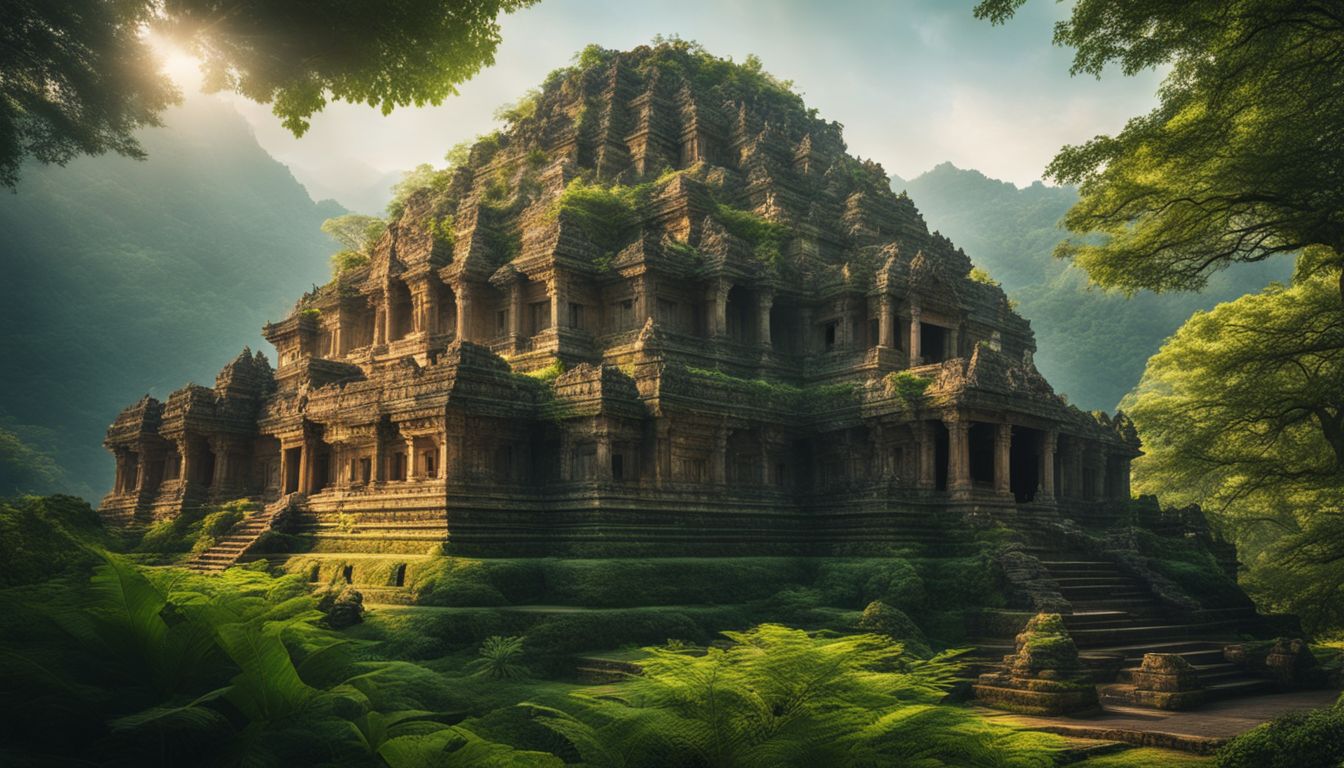
The Gauda Kingdom was a big place in the 6th century CE. It was in Bengal, India, where West Bengal is now. The kingdom had its start in this region of Bengal called Gauda. Some people also called it Shashankas.
This kingdom was strong and stood on its own. They didn’t need help from other places to run their land. It played a big part in shaping what we know as Bangladesh today. This time is known as the Classical period when many kingdoms like Gauda were growing on the Indian subcontinent.
Pala dynasty
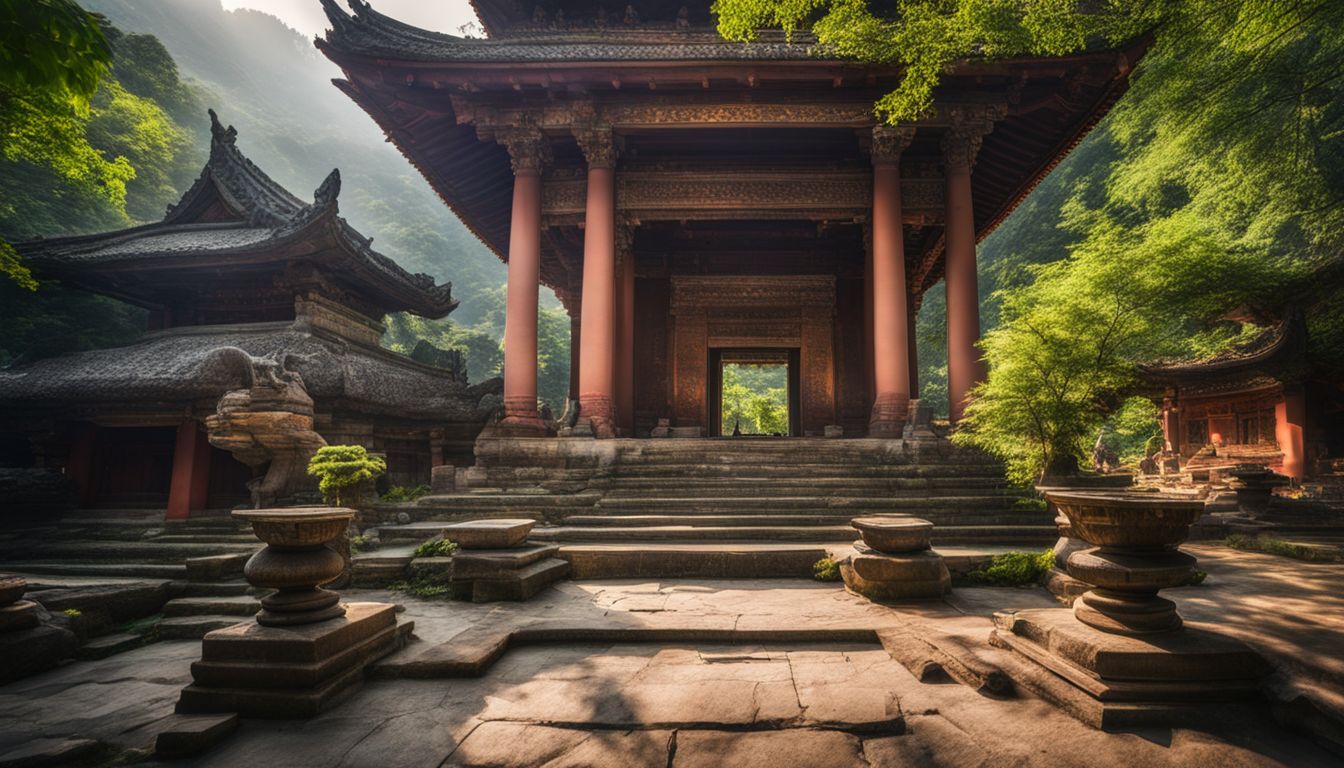
The Pala dynasty ruled over Bengal and Bihar for four centuries, from the 8th to the 12th century. Gopala was the founder of this well-known dynasty. During their rule, Bengal saw a period of peace and growth.
But all good things come to an end. The Pala empire started breaking up when Vigrahapala II was in charge. Later, Mahipala took back parts of Bengal, Bihar, and Varanasi that were lost under earlier rulers.
The history of Bengal holds a golden chapter devoted to the Pala era.
Chandra dynasty
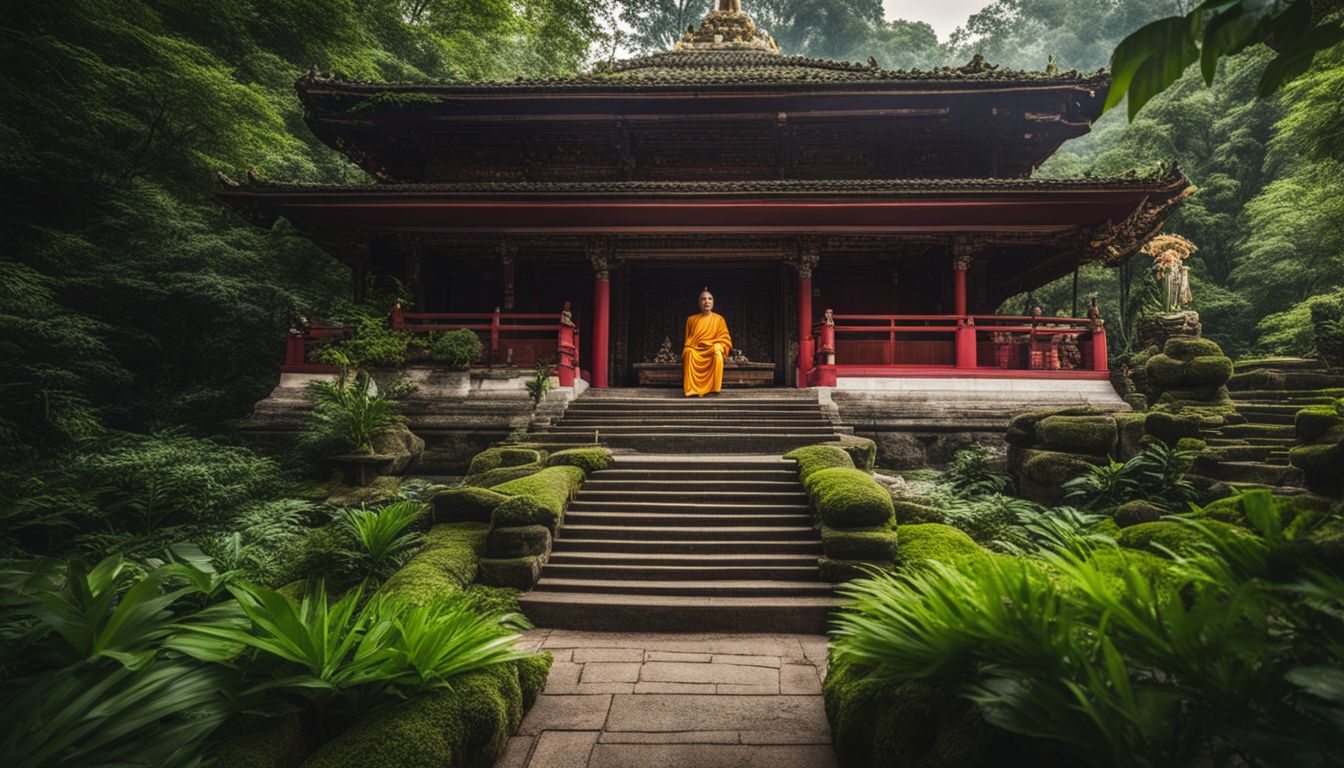 The Chandra dynasty was a Bengali Buddhist dynasty that ruled over the Samatata area of Bengal. It originated from the Bengal region of the Indian subcontinent and coexisted with both Hinduism and Buddhism.
The Chandra dynasty was a Bengali Buddhist dynasty that ruled over the Samatata area of Bengal. It originated from the Bengal region of the Indian subcontinent and coexisted with both Hinduism and Buddhism.
The Chandra dynasty played a role in the evolution of the former name of Bangladesh, contributing to its rich history and cultural heritage.
Sena dynasty
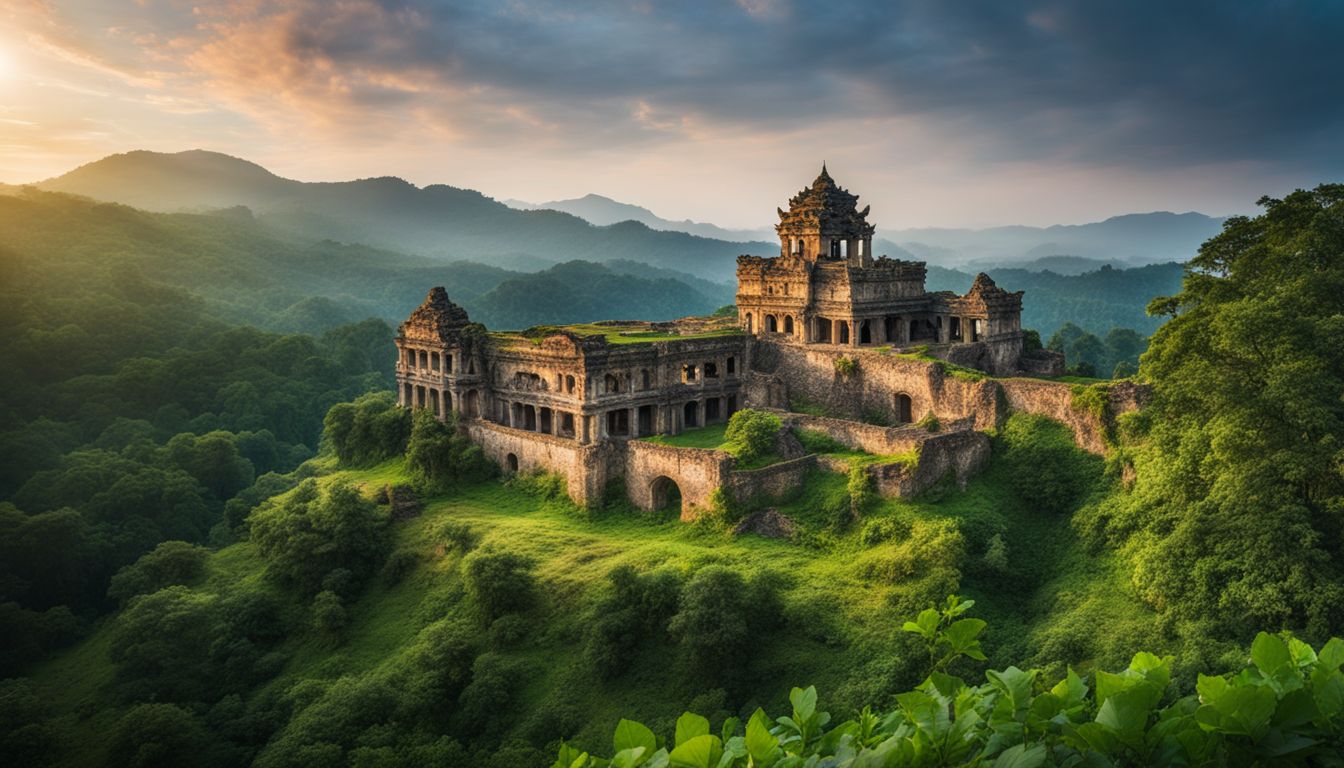
The Sena dynasty ruled Bengal from the 11th to the 12th centuries. They were powerful and took over from the Palas. The Sena dynasty is known as the last Hindu kings of Bengal. However, they were defeated by Muslim invaders in the early 13th century.
During their rule, they governed and administered Bengal as a Hindu dynasty, leaving a significant impact on Indian history during that time.
Deva Kingdom
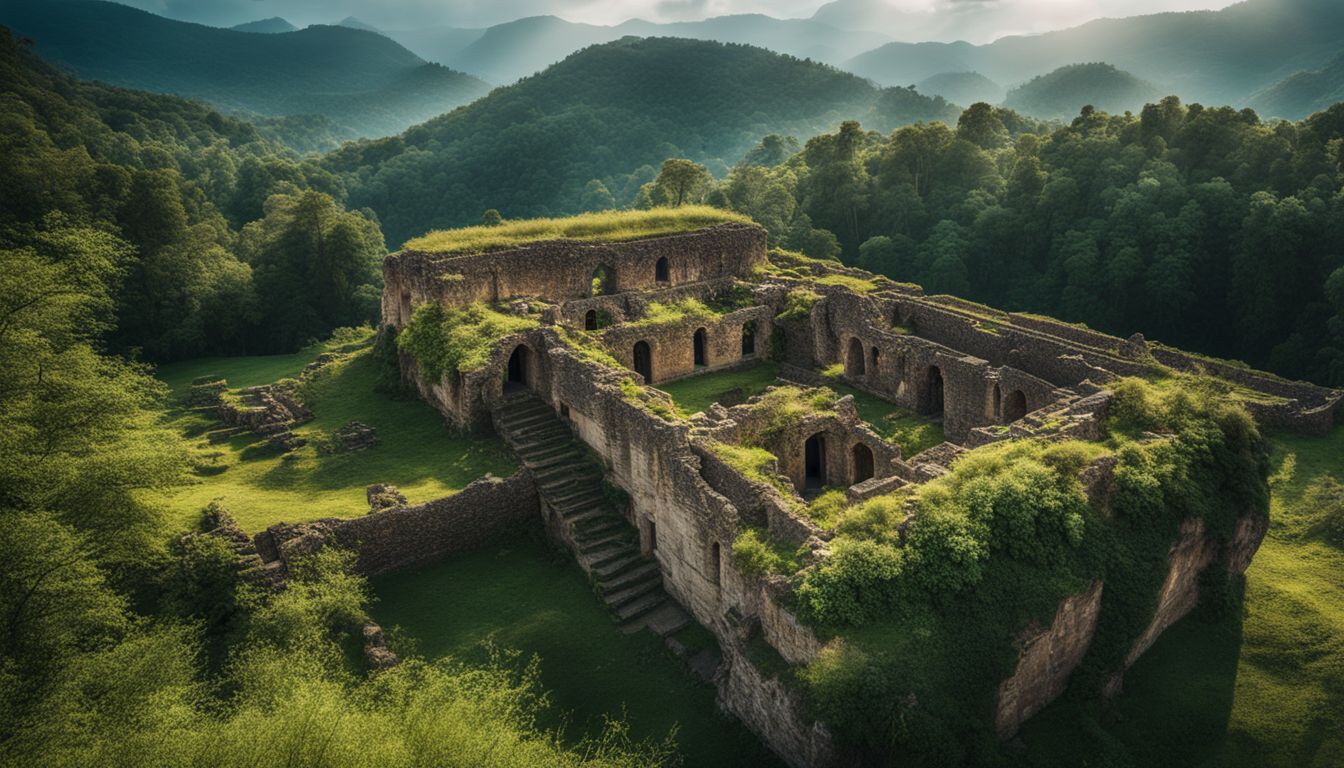
The Deva Kingdom was one of the early Bengali kingdoms that existed around 2,000 years ago. It was ruled by the Chandra dynasty and played a role in the evolution of the former name of Bangladesh.
The kingdom was located in eastern Bengal, which is now part of present-day Bangladesh. It was situated in the ancient lands of Harikela, Vanga, and Samatata. The Deva Kingdom holds significance as it contributes to understanding the historical origins and development of Bangladesh.
Islamic Bengal
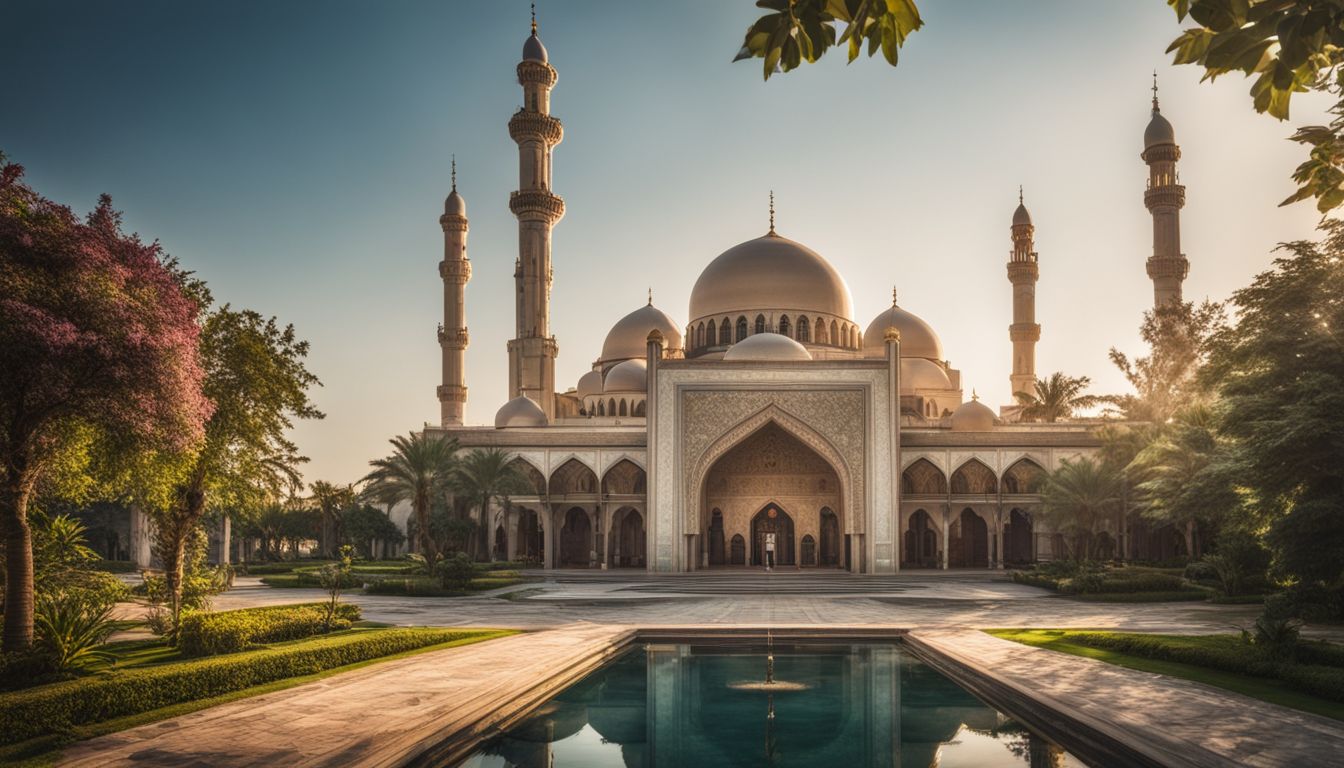
During the period of Islamic Bengal, various dynasties and sultanates ruled over the region, including the Turko-Afghan rule, Sonargaon Sultanate, and later the Bengal Sultanate under the Ilyas Shahi and Hussain Shahi dynasties.
Turko-Afghan rule

During the Turko-Afghan rule, which started in 1204 CE, Muslim rulers from outside Bengal established their authority. Muhammad Bakhtiyar Khilji was the first Turko-Afghan ruler to bring Muslim rule to Bengal.
They formed a sultanate and had control over North India as well. The Bengali society under their rule consisted of people from different backgrounds, including Bengalis, Turkic and Persian elites, Indo-Afghans, and Abyssinians.
This time period saw advancements in education throughout Muslim Bengal. Other dynasties like Ghurids, Khaljis, Tughluqs, and Lodis also ruled over South Asia during this era. Mughal rule in what later became Bangladesh began during Akbar’s reign in the Mughal Empire.
Sonargaon Sultanate

The Sonargaon Sultanate was a period of Muslim rule in Bengal during the 14th century. It was established by Fakhruddin Mubarak Shah and later ruled by his son, Ikhtiyaruddin Ghazi Shah.
The sultanate had its capital in the city of Sonargaon, which is now located in present-day Bangladesh. Under the rule of Ghiyasuddin Azam Shah, Sonargaon became the capital of the larger Bengal Sultanate.
This period saw a mix of Bengali, Turco-Persian, Indo-Afghan, and Abyssinian elites influencing the region’s politics and culture. Today, Sonargaon is known for Panam Nagar, an abandoned city built by Hindu merchants in the early 19th century.
Bengal Sultanate
The Bengal Sultanate was a powerful empire that ruled over the region for about two centuries, from 1352 to the 16th century. It included present-day Bangladesh and parts of Myanmar.
The ruling elites of the Bengal Sultanate were made up of people from diverse backgrounds, including Bengali, Turco-Persian, Indo-Afghan, and Abyssinian origins. Sufism, which is a mystical branch of Islam, influenced the form of Islam practiced in this sultanate.
The establishment of the Bengal Sultanate marked an important turning point in the history of the region and eventually led to its evolution into what we now know as Bangladesh.
Ilyas Shahi dynasty
The Ilyas Shahi dynasty was the first independent ruling family in Bengal. They played a significant role in shaping the history of Bangladesh. During their rule, there was religious diversity and tolerance.
However, their reign was not without challenges. Raja Ganesha led a Hindu rebellion that briefly interrupted the dynasty’s control over Bengal. King Shamsuddin Ilyas Shah, a notable ruler from this dynasty, expanded the Sultanate of Bengal through his military campaigns.
The Ilyas Shahi dynasty was part of the larger Bengal Sultanate which had a lasting impact on the region’s history and identity as we know it today.
Ganesha dynasty
The Ganesha dynasty started in Bengal with Raja Ganesha in 1414. After seizing control over Bengal, he faced the constant threat of invasion. It’s important to note that during the Muslim rule of the Bengal Sultanate, there was a significant Hindu aristocracy, including the rise of Raja Ganesha himself.
So, despite being under Islamic rule, Hindus still held positions of power and influence within the region.
Hussain Shahi dynasty
The Hussain Shahi dynasty was a ruling dynasty during the late medieval period in Bengal, from 1494 to 1538. It was founded by Alauddin Husain Shah, who became the ruler of Bengal.
The dynasty played a significant role in spreading Islam in Bengal and had religious pluralism. They controlled large parts of the eastern Indian subcontinent during their five dynastic periods, with their peak under the Hussain Shahi dynasty.
Alauddin Husain Shah was succeeded by his son Nasiruddin Nasrat Shah. The Bengal Sultanate-Kamata Kingdom War led to the conquest of Assam by the Bengal Sultanate.
British Colonial Period

During the British Colonial Period, Europeans arrived in Bengal, leading to British rule and the emergence of the Bengal Renaissance. One major event was the Partition of Bengal in 1905, which had significant consequences for the region.
To learn more about this fascinating period of history, continue reading!
Europeans in Bengal
During the colonial period, Europeans made their way to Bengal and left a lasting impact. The Portuguese were the first to establish a settlement in Chittagong. Later on, the British arrived and took control of Bengal, bringing significant changes to the region.
Their rule led to economic upheaval, social transformations, and cultural influences. This European presence shaped the trajectory of Bengal’s history and set the stage for future developments.
British rule
The British rule in Bangladesh lasted from around 1700 to 1947. During this time, the British brought many changes to the region. They introduced new economic systems and industries, which had a big impact on people’s lives.
The social structure also went through upheaval as traditional practices were challenged or changed. Additionally, there were cultural shifts as British influence spread, leading to the adoption of Western ideas and customs.
Overall, the British rule left a lasting legacy on Bangladesh in terms of its economy, society, and culture.
Bengal Renaissance
During the British colonial period in Bengal, there was a significant cultural and intellectual movement known as the Bengal Renaissance. This was mainly led by wealthy Bengali Hindus who aimed to revive and reform various aspects of society.
The British Empire played a crucial role in this renaissance by introducing modern education and providing opportunities for social mobility. They also supported the growth of Western Bengal, which had a Hindu majority, as a center for arts, literature, and education.
As a result, many renowned figures emerged during this time, promoting social reforms, literature, science, and nationalism. The impact of the Bengal Renaissance can still be seen today in the rich literary heritage and cultural identity of Bangladesh and West Bengal.
Partition of Bengal, 1905
The Partition of Bengal in 1905 was a significant event during British colonial rule in India. The British Raj made the decision to divide Bengal into two separate provinces – East Bengal and West Bengal.
This move aimed to weaken the growing nationalist sentiment in Bengal, as well as to appease the Muslim-majority region of East Bengal. However, this decision caused widespread opposition from both Hindus and Muslims.
The partition brought Bengal to the brink of open rebellion. People protested against this division through boycotts, strikes, and demonstrations. The Indian National Congress also played a crucial role in organizing resistance against the partition.
As a result, the protest movement transformed the Indian National Congress into a nationwide mass movement for independence.
The partition of Bengal had far-reaching consequences on India’s political landscape. It furthered communal tensions between Hindus and Muslims, which eventually led to more significant demands for separate Hindu and Muslim nations during India’s later partition in 1947.
Union with Pakistan and the War of Independence
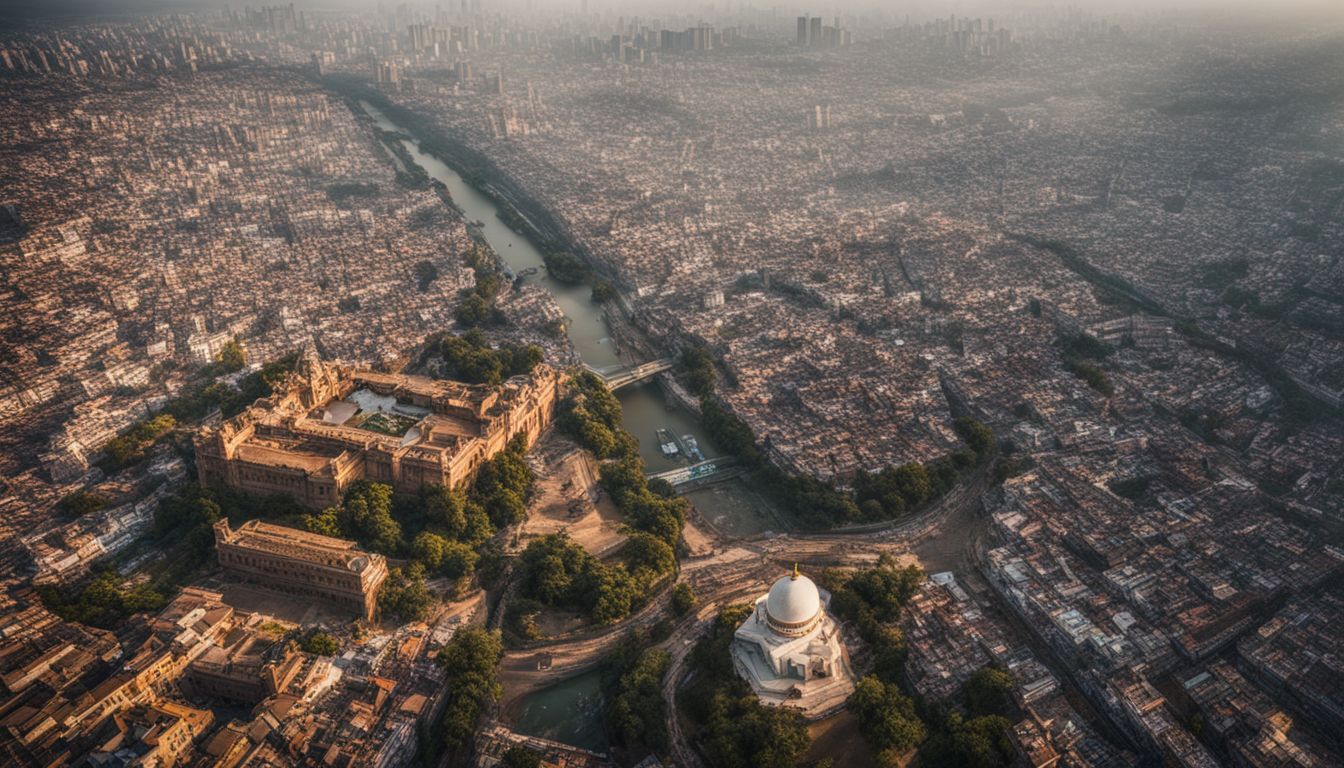
In 1947, Bengal was divided along religious lines, with the Hindu-majority areas becoming part of India and the Muslim-majority areas joining Pakistan. This union with Pakistan eventually led to the War of Independence in 1971.
Bengal in 1947
In 1947, something important happened to Bengal. It became a province of Pakistan after the partition of India. This division separated Bengal into two parts: West Bengal belonging to India and East Bengal belonging to Pakistan.
The borders of modern Bangladesh were established at this time, marking the beginning of its separate identity. However, tensions arose between East and West Pakistan, leading to the formation of the liberation army Mukti Bahini in 1971.
Their fight for independence resulted in the Bangladesh Liberation War and eventually led to the birth of Bangladesh as an independent country. During this period from 1947 to 1971, there was also a strong movement in support of Bengali language and culture.
Union with Pakistan
In 1947, when British India was granted independence, it was divided into two separate countries: India and Pakistan. The region that is now Bangladesh became a part of East Pakistan.
However, the people of East Pakistan faced discrimination and neglect from the government in West Pakistan. This led to growing tensions between East and West Pakistan. In 1971, a conflict broke out between the Pakistani military and Bengali freedom fighters in East Pakistan.
This conflict, known as the Bangladesh Liberation War, resulted in widespread violence and atrocities committed by the Pakistani military against the Bengali population. Eventually, with support from India, East Pakistan achieved its independence on December 17th, 1971 and became known as the People’s Republic of Bangladesh.
Bengali Language Movement
The Bengali Language Movement was a political movement in East Bengal that began in 1948. It aimed to address language discrimination faced by the Bengali-speaking population in East Pakistan.
The protesters demanded the recognition of Bengali as a national language, as Urdu had been declared the sole official language. The movement reached its peak on February 21, 1952, when protesters were killed for their demands.
This movement played a significant role in shaping the identity and cultural consciousness of Bengali speakers and eventually led to Bangla being recognized as a state language of Pakistan on March 23, 1956.
Politics: 1954-1971
From 1954 to 1971, Bangladesh was associated with the Union with Pakistan and the War of Independence. During this time, major world powers had different stances on the situation. The United States and China supported a united Pakistan, while the Soviet Union and India called for an independent Bangladesh.
In 1955, East Pakistan was established after restructuring from East Bengal. The conflict escalated in 1971 when the Bangladeshi Muktu Bahini and Indian forces formed an Allied Command and defeated the West Pakistani army on November 21st.
This Liberation War had a significant impact on the mindset of Bangladeshi people.
Founding of Bangladesh
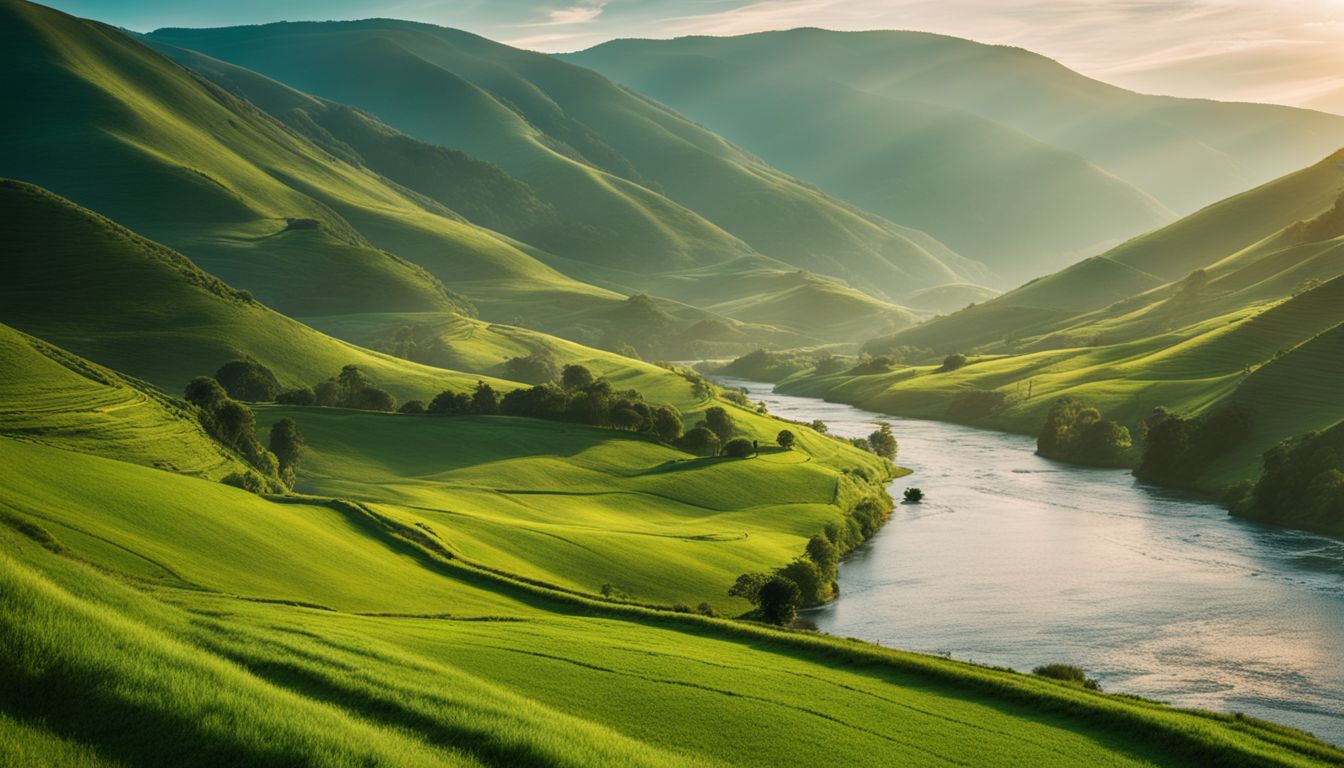
Bangladesh was officially founded after a long and arduous struggle for independence, with the formal declaration of independence marking a turning point in its history.
Independence movement
The independence movement of Bangladesh was a struggle for freedom from political, economic, and social exploitation. It began with the proclamation of Bangladeshi independence in March 1971, which led to the nine-month-long Bangladesh Liberation War.
During this war, the Mukti Bahini, a Bangladesh independence militia, fought against Pakistani forces with support from the government of India. The movement aimed to establish an independent and sovereign Bangladesh free from oppressive rule.
Formal Declaration of Independence
The formal declaration of independence for Bangladesh was a significant event in the country’s history. It marked the beginning of its separation from Pakistan and the birth of a new nation.
This declaration came during the Bangladesh Liberation War, which lasted for nine months. The war ended with East Pakistan gaining independence and becoming Bangladesh. It was on February 4, 1972, that the British government officially recognized Bangladesh as an independent nation.
This momentous occasion represented the culmination of a long struggle for self-determination and paved the way for modern-day Bangladesh to establish its own government and shape its future.
Pakistani capitulation and aftermath
On December 16, the Pakistani defenses surrendered, marking a significant turning point in the history of Bangladesh. This led to the independence of Bangladesh and the end of Pakistan’s control over East Pakistan.
As a result, Yahya Khan, who was the President of Pakistan at that time, was deposed and replaced. The 1971 Liberation War had a profound impact on the Bangladeshi people and their mindset.
It shaped their identity as a nation and highlighted their determination for freedom and self-determination.
People’s Republic of Bangladesh
The People’s Republic of Bangladesh was officially formed on April 10, 1971. Its founding marked a significant turning point in the history of the region. Following the formal declaration of independence from Pakistan, Bangabandhu Sheikh Mujibur Rahman became the President.
This event came after years of political struggle and turmoil in which Bangladesh fought for its freedom and sovereignty. The formation of the People’s Republic of Bangladesh signaled a new beginning for the country, as it embarked on a journey to establish its own government, shape its politics, and work towards socio-economic development.
Government and Politics in Modern Bangladesh

Bangladesh has experienced various forms of government throughout its history, from early kingdoms to British colonial rule and eventually independence. Learn about the country’s constitutional development, political upheavals, and the ongoing challenges it faces in this blog post.
Read more to delve deeper into Bangladesh’s fascinating political landscape.
Constitution, early democracy and socialism
The constitution of Bangladesh was established in 1973, creating a government system based on democratic principles. The country adopted a secular state, parliamentary form of government, and a bill of rights to protect its citizens’ rights.
Democracy was introduced during British rule in the 1700s and continued after independence in 1947. Legislative power is shared between the government and parliament, ensuring checks and balances.
The constitution has been amended several times since it was written in 1972, reflecting the changing needs of the nation. Socialism is one of the core principles embraced by Bangladesh, alongside nationalism, secularism, and democracy.
Military coups and presidential regimes
Bangladesh has experienced several military coups since gaining independence. The first recorded uprising happened in August 1975, and there have been subsequent attempts at coups.
Currently, the government system in Bangladesh is a presidential regime. This means that the executive branch consists of a president and a prime minister. The president serves as the chief of state, while the prime minister is the head of government.
It’s important to note that opposition political parties have been abolished in Bangladesh. One significant event related to this topic was the assassination of Prime Minister Mujibur Rahman during a military coup in 1975.
Return of parliamentary republic and Battle of the Begums
During the First caretaker government period in Bangladesh from 1990 to 1991, there was a significant development known as the “Return of parliamentary republic” and the “Battle of the Begums.” This marked an important shift in Bangladesh’s political system.
The parliamentary system is a central part of Bangladesh’s government structure, with the Prime Minister serving as the head of government.
The Battle of the Begums refers to a fierce competition between two female leaders – Sheikh Hasina and Khaleda Zia. Their rivalry has been described as dysfunctional and intense. This battle for power between them has had a lasting impact on Bangladesh’s political landscape.
Chittagong Hill Tracts conflict
The Chittagong Hill Tracts conflict is an ongoing political and armed conflict between the government of Bangladesh and the Parbatya Chattagram Jana Samhati Samiti. This conflict started when Bangladesh was part of Pakistan, which led to resentment over the displacement of indigenous people in the Chittagong Hill Tracts region.
The problem has persisted since then, with this region feeling isolated from the rest of the country. The government tried to address these issues through a peace accord but faced challenges as it contradicted certain aspects of the national constitution.
As a result, there has been an insurgency in Southeast Bangladesh for more than a decade, reflecting the complex dynamics and challenges faced in this area.
Geography and Climate of Bangladesh
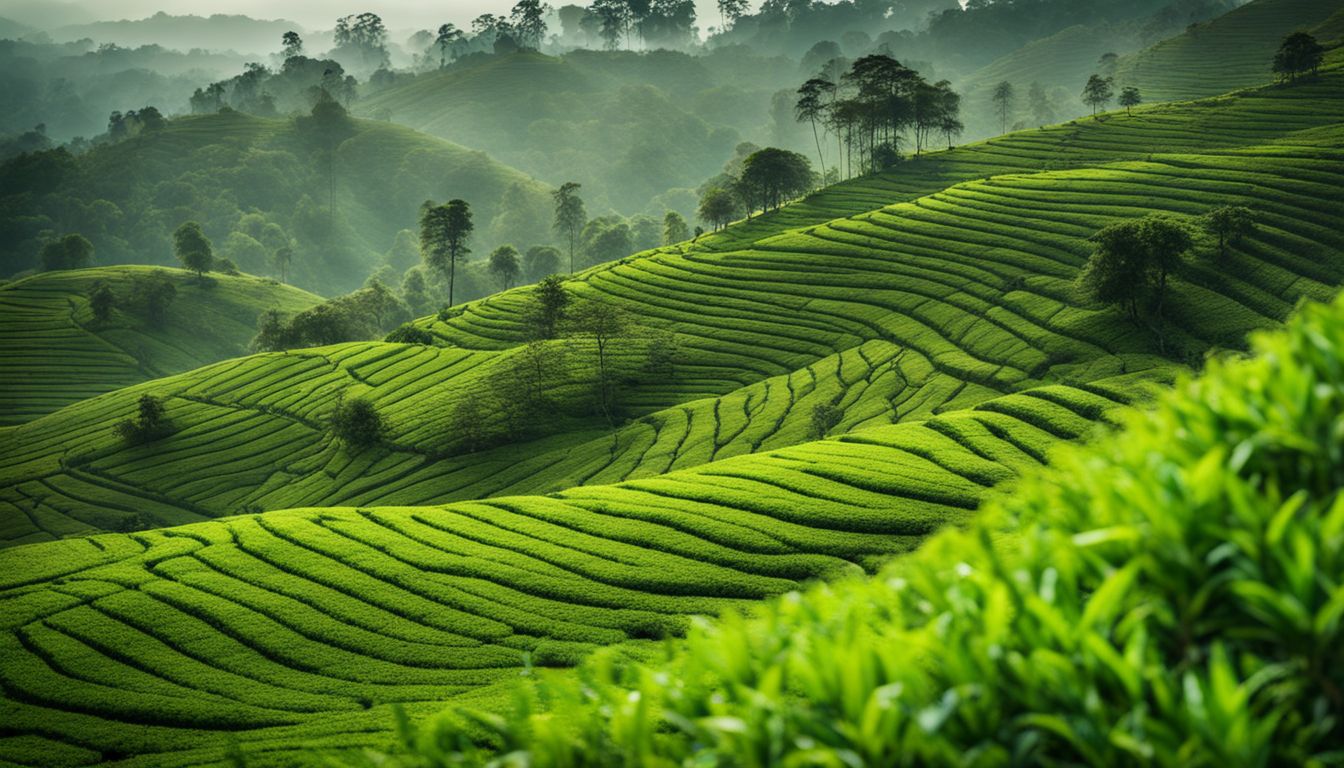
Bangladesh is divided into several administrative divisions, each with its own distinct geography and climate.
Administrative divisions
Bangladesh has eight administrative divisions: Dhaka, Chittagong, Rajshahi, Khulna, Barisal, Sylhet, Rangpur, and Mymensingh. Each division is further divided into districts, with a total of 64 districts in the country.
The divisions are responsible for governing and administering their respective districts. For example, Dhaka is not only the capital city but also a division itself. Chittagong division is located in the southeastern part of the country and is known for its major seaport.
On the other hand, Rangpur division is situated in the northern part of Bangladesh and is recognized for its agricultural activities.
Climate
Bangladesh’s climate is closely tied to its geography. The country experiences a tropical monsoon climate, characterized by high temperatures and heavy rainfall. Summers are hot and humid, while winters are mild and dry.
The country’s coastal regions are particularly vulnerable to cyclones and storm surges due to their low-lying nature. Climate change has exacerbated these risks, leading to increased frequency and intensity of extreme weather events like floods, droughts, and cyclones.
These changes have had significant economic consequences for Bangladesh, with the country experiencing substantial losses in agriculture, infrastructure damage, and displacement of communities.
Biodiversity
Bangladesh is known for its incredible biodiversity, making it one of the most biodiverse countries in the world. Its geography and climate contribute to this richness. The country encompasses five broad types of ecosystems, including coastal and marine ecosystems, as well as inland ecosystems.
The delta region formed by the Padma and Jamuna rivers creates a unique habitat for various species. It’s truly a treasure trove of diverse plants, animals, and microorganisms that call Bangladesh home.
Demographics and Culture of Bangladesh
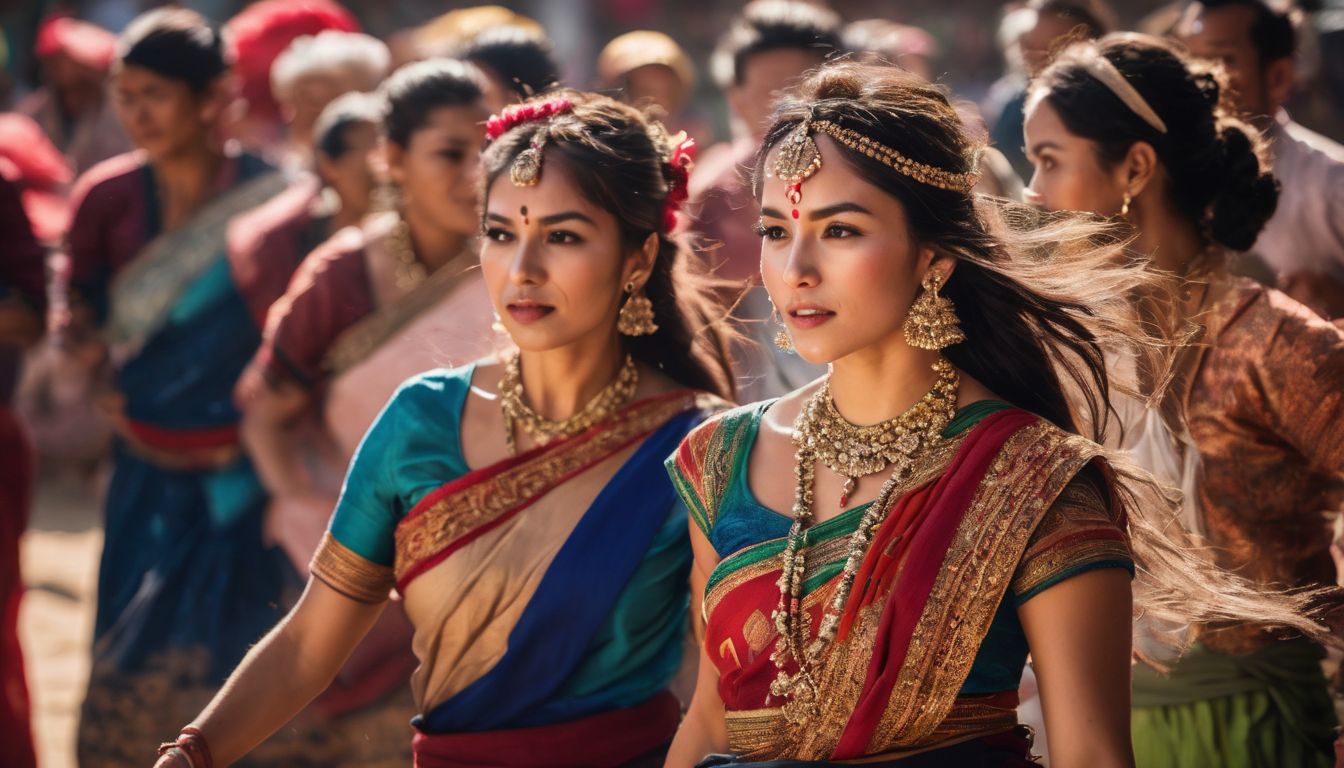
Bangladesh is home to a diverse population and rich cultural heritage. With bustling urban centers and a vibrant rural life, it offers a unique experience for visitors. From the Bengali language to religious diversity, education, health, visual arts, cuisine, and festivals – there is so much to explore.
Dive into the captivating world of Bangladesh’s demographics and culture here!
Population and urban centers
Bangladesh has a population of over 160 million people, with Bengalis making up to 99% of the total population. The country is one of the most densely populated in the world. Dhaka, the capital city, is home to more than 21 million people and is one of the largest cities in South Asia.
Other major urban centers include Chittagong, Khulna, and Rajshahi. These cities serve as economic hubs and contribute significantly to Bangladesh’s growth and development.
Language and religion
Language and religion play significant roles in the culture of Bangladesh:
- Islam is the predominant religion in Bangladesh, with 89% of the population being Muslims.
- The Bengali Muslim population in Bangladesh has evolved through conversion and religious practices.
- Prior to Islamic influences, Buddhism and Hinduism were prevalent religions in Bangladesh.
- Language differences in Bangladesh reflect social and religious divisions among its people.
- Bangla, the official language of Bangladesh, is divided into two forms: sadhu basha (formal) and chalit basha (colloquial).
- Both Hindu and Muslim religious groups have important positions within the government of Bangladesh.
- Before gaining independence, the former name of Bangladesh was East Pakistan, which was part of larger Pakistan.
Education and health
Education and health are two important aspects of the development of Bangladesh. The country has made significant progress in both areas over the years. In terms of education, Bangladesh has developed a system that offers secondary education in various streams leading to a Master’s degree.
This provides opportunities for students to pursue higher studies and gain specialized knowledge in their chosen fields. In addition, efforts have been made to improve access to quality education, especially for girls and children from marginalized communities.
When it comes to healthcare, Bangladesh has implemented several measures to enhance the well-being of its citizens. The government has focused on improving primary healthcare services by establishing community clinics across the country.
These clinics provide essential medical care and preventive services at the grassroots level, ensuring that people have access to basic healthcare facilities.
Additionally, initiatives have been taken to address major health challenges such as maternal and child mortality rates. Efforts are being made to improve reproductive healthcare services, promote immunization programs, and increase awareness about hygiene practices.
Visual arts and crafts
Visual arts and crafts have always held a significant place in the history and culture of Bangladesh. Throughout the country, there is a rich tradition of practicing various forms of art that reflect the creativity and talent of the Bangladeshi people.
While painting as an independent art form has emerged relatively recently, its growth has been influenced by key figures who have contributed to its development.
Today, new generations of artists in Bangladesh critically reflect on their society and its artistic heritage. They explore different mediums, techniques, and styles to express their ideas and perspectives.
Handcrafted objects also play an essential role in understanding the socio-economic, cultural, spiritual, and intellectual aspects of the country. These crafts showcase intricate designs and fine craftsmanship that highlight Bangladesh’s traditional skills and aesthetics.
Cuisine and festivals
The cuisine of Bangladesh is a reflection of its rich culture and diverse demographics. It incorporates flavors, techniques, and ingredients from various regions. Rice, fish, and lentils are staple foods in Bangladeshi cuisine.
Popular dishes include biryani, korma, bhuna curry, and pitha (rice cakes). Street food like samosa, jhalmuri (spicy puffed rice), and fuchka (pani puri) are also highly enjoyed. When it comes to festivals, Bangladesh has a vibrant calendar filled with religious, national, cultural, and tribal events.
Religious celebrations such as Eid-ul-Fitr (marking the end of Ramadan), Durga Puja (Hindu festival honoring goddess Durga), and Christmas are widely observed. The Bengali New Year or “Pohela Boishakh” is an important cultural festival celebrated with music performances and colorful processions.
Conclusion.
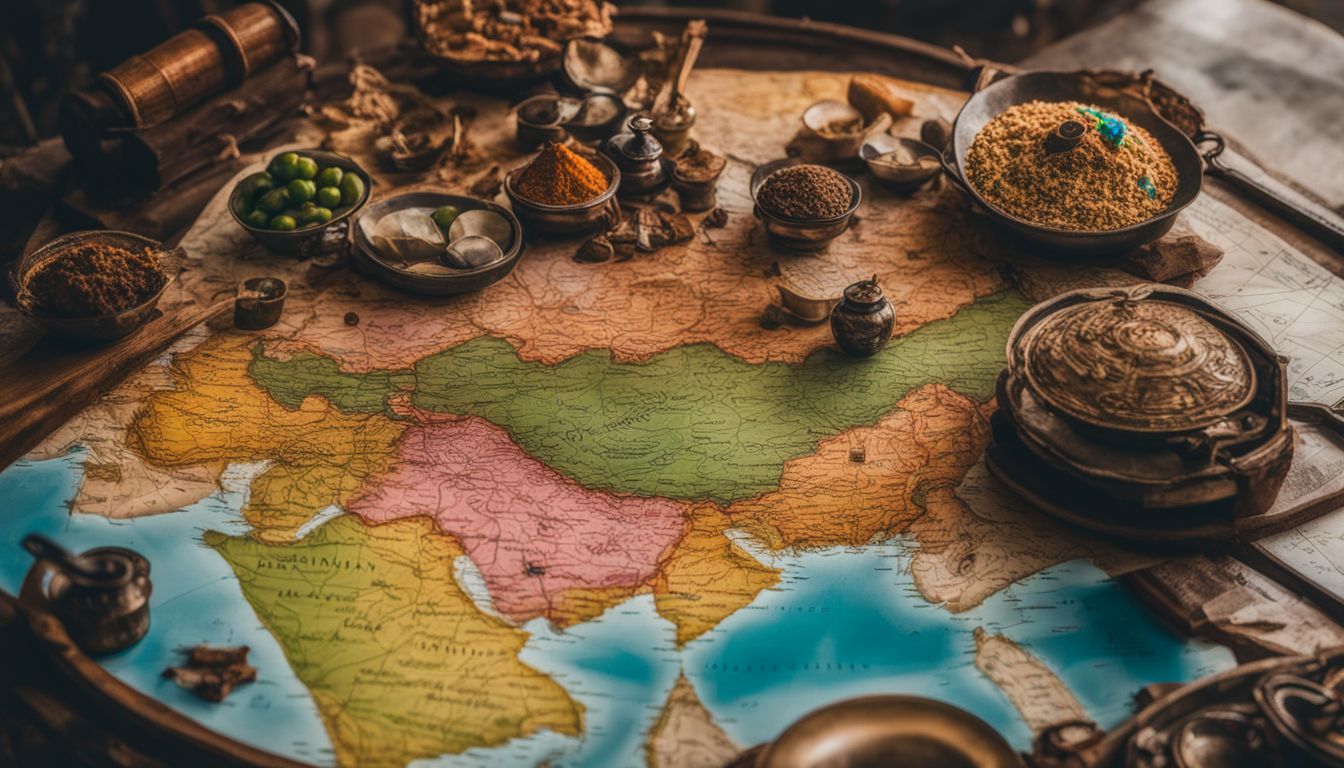
In conclusion, the former name of Bangladesh was East Pakistan from 1947 to 1971. After declaring independence from Pakistan in 1971, it became the People’s Republic of Bangladesh.
Throughout its history, Bangladesh has had a rich cultural heritage and experienced various changes in government and politics. Today, it is a unique nation with its own identity and contributions to the world.
FAQs
1. What was the former name of Bangladesh?
The former name of Bangladesh was East Pakistan.
2. When did Bangladesh change its name?
Bangladesh changed its name from East Pakistan to Bangladesh on March 26, 1971.
3. Why did East Pakistan become Bangladesh?
East Pakistan became Bangladesh after a nine-month-long war for independence against West Pakistan’s control and domination.
4. How did the name “Bangladesh” come about?
The term “Bangladesh” is derived from two words: “Bangla,” which refers to the language spoken in the region, and “desh,” meaning country or land.
5. What significance does this name change hold for Bangladeshis?
The name change holds great significance for Bangladeshis as it symbolizes their struggle for independence and the establishment of their own identity as a sovereign nation.
